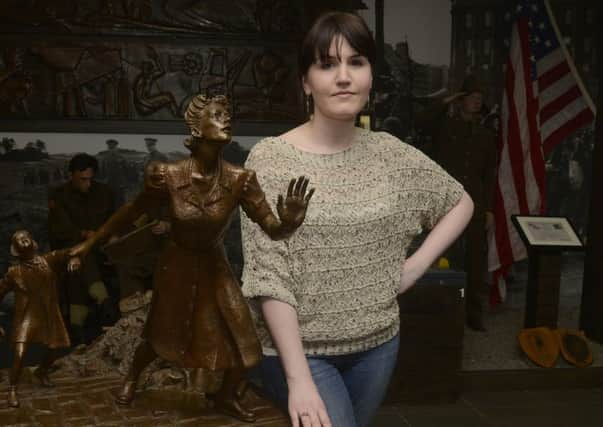Belfast Blitz 75th anniversary marked by special events


On Easter Tuesday, April 15, 1941, the Luftwaffe rained down thousands of incendiary bombs and around 200 tonnes of explosives in what became known as the Blitz.
The Harland & Wolff shipyard, the docks, railway stations and military barracks were all targeted but the death and destruction was much more widespread.
Advertisement
Hide AdAdvertisement
Hide AdMany homes in the tightly-packed terraced streets of the city were also reduced to rubble.
The bombing mission would bring the greatest loss of life from any World War Two air raid outside of London.
Around 1,500 people were injured. A second air raid on the night of May 4-5 resulted in the loss of a further 150 people.
Northern Ireland War Memorial education officer Jenny Haslett said there was an enhanced programme of commemorative events this year to coincide with the 75th anniversary.
Advertisement
Hide AdAdvertisement
Hide Ad“We are also very conscious that people who witnessed the Blitz, or who were involved in it, are passing away, so it’s really a chance for us to remind people and to call for people to give us their memories,” she said.
“We have an oral history project this year with a researcher, Dr Susan Kelly, who is hoping to interview people about their memories. Maybe in five years, when we commemorate the 80th anniversary, those people could be gone.”
On Friday April 15 a memorial plaque will be unveiled at St George’s Market as the market was used as a temporary mortuary at the time, as were the Falls and Peter’s Hill Baths where plaques are also being erected.
A number of others are being installed at sites around the city where the greatest loss of life occurred, including: Hogarth Street; Ohio Street/Heather Street; Greencastle; York Street Mill/Vere Street/Sussex Place; Atlantic Avenue; Percy Street; Thorndyke Street; Trinity Street Church; Ravenscroft Avenue; Lincoln Avenue; Blythe Street; Campbell College; Victoria Barracks and Burke Street.
Advertisement
Hide AdAdvertisement
Hide AdEach plaque will display the number of casualties at each location.
Following the event at St George’s Market, a commemoration ceremony will take place in the NI War Memorial gallery in Talbot Street which will be open from 12 noon on Friday.
Ms Haslett added: “On Friday evening at the city hall there will be a lecture by Dr Brian Barton, with a sound and lights presentation where they are going to stream the names of all those who died on to the big screen at the city hall.
“That will be almost 1,000 names being beamed up on to the screen.”